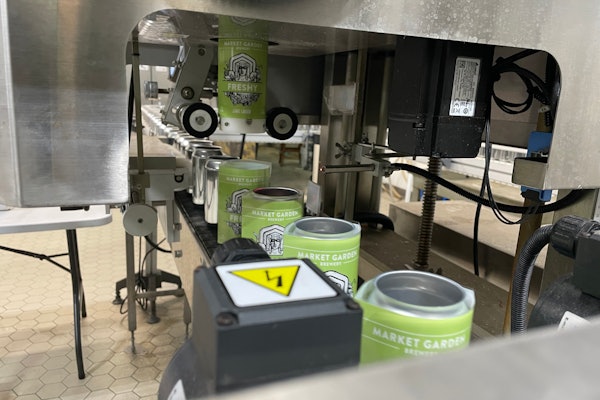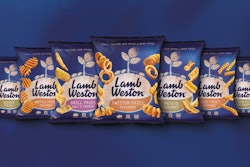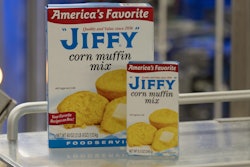Whether you think this new labeling is worth the resulting costs depends on what you think of the reasons for the new law, and those turn out to be varied.
Beginning at the end of September, a new law went into effect requiring “Country of Origin Labeling” (“COOL”) on a lot of individual foods. Products packaged or produced after September 30, 2008 will need to be labeled with their country of origin.
Covered products are of the U.S. Department of Agriculture variety, lots of meats and items of produce, but not processed foods or foods with combined ingredients. Included are cuts of beef, lamb, chicken, goat, and pork as well as their ground forms; perishable agricultural commodities; both fresh and frozen fruits and vegetables; peanuts; pecans; macadamia nuts; and ginseng. Fish and shellfish are also included, but have had to feature country of origin labeling since April 2005.
The label requirement falls upon licensed retailers. Small establishments and food service establishments, such as restaurants and cafeterias, are exempt from having to provide the label statement.
Why does one care where food comes from? Well, for one thing, this measure could be seen as catch-up, since most imported products consumers encounter are already required to be labeled with the country of their origin, including processed and packaged foods.
USDA says of the new law, “The intent of this law is to provide consumers with additional information on which to base their purchasing decisions. COOL is a retail labeling program and as such does not provide a basis for addressing food safety.”
Well, kind of. Hey, information for its own sake has its charms, but you still have to wonder why Congress thought giving consumers this additional information would help them. Seems to me some form of fear is part of the equation here—the average consumer might want to avoid food from specific foreign countries which they think have sub-standard safety and pesticide controls. Also, this new COOL requirement grows out of a law passed in 2002, although its implementation was delayed a couple of times. The year 2002 is notable for coming right after 2001, when concerns with potential terrorist interference with the food supply were fresh in mind.
In the meantime, in the years since 2002, some high-profile food illness outbreaks have helped push forward the idea that consumers might prefer U.S. or even local meat and produce if the imported stuff is suspect in terms of safety (though, clearly, some outbreaks appear to have been fully domestic).
So consumers who are inspired to buy American products, or to buy locally with environmental concerns in mind, will have an easier time when the imported products are labeled as such. This could be seen as another purpose behind the new requirement.
Since processed food items are exempted, the U.S. Department of Agriculture has offered up its definition of that term. It says a processed food item is a “retail item derived from a covered commodity [covered by the law requiring COOL labeling] that has undergone specific processing resulting in a change in the character of the covered commodity, or that has been combined with at least one other covered commodity or other substantive food component...”
It further explains that “specific processing” includes cooking, curing, smoking, or restructuring (like emulsifying or extruding). In short, the COOL requirement is going to apply to single-ingredient individual food items.
The USDA has said that during the initial 6-month period following September 30, 2008, it will focus on industry education and outreach about the requirements of the rule rather than strict enforcement.
The law offers some flexibility in how the COOL statements can be provided. Retailers who are required to notify the consumer of the country of origin of covered products can provide it by means of a label, stamp, mark, placard, or other clear and visible sign on the covered commodity or on the package, display, holding unit, or bin containing the commodity at the final point of sale to consumers.
USDA advises that although the requirement falls on the retailer, “suppliers are required to make the relevant country of origin information available to their buyers.” They can do that by putting it on the product itself or on a shipping container or documentation accompanying the product.
The rules don’t specify details like location, color, font size, or typeface, but it must be legible and placed in a conspicuous location “likely to be read and understood by a customer under normal conditions of purchase,” says a USDA document.
The USDA has issued an interim final rule that calls for generic approval of label changes that are necessary to comply with the new COOL requirement.
Of course, on the flip side of the concept of labeling imported food with its country of origin, it is often desirable for a food seller to be able to say that its product is domestic, that is, a “product of the U.S.” For that reason, the new requirements also contain a definition of when the U.S. can be declared the country of origin of a product.
It’s a mouthful, if you will: “A covered commodity may bear a declaration that identifies the United States as the sole country of origin at retail only if it meets the definition of United States country of origin. Under the interim final rule, beef, pork, lamb, chicken, and goat must be derived from animals exclusively born, raised, and slaughtered in the United States; from animals born and raised in Alaska or Hawaii and transported for a period of not more than 60 days through Canada to the United States and slaughtered in the United States; or from animals present in the United States on or before July 15, 2008, and once present in the United States, remained continuously in the United States.”
Also, “For perishable agricultural commodities, peanuts, ginseng, pecans, and macadamia nuts, products must be grown in the United States.”
Trade groups including the United Fresh Produce Association, Food Marketing Institute, and American Meat Institute have been working hard in recent months to prepare their members to comply with and implement the new rules. AMI has said as far back as 2005 that it would have preferred voluntary COOL labeling, noting that consumers don’t care much about country of origin in meat products and that it will be burdensome and expensive on the industry to implement.
Yes, expensive. One USDA estimate says that “first-year incremental cost for growers, producers, processors, wholesalers, and retailers [will be] at $2.5 billion.” The paperwork alone, says the agency, will cost about $126 billion to start, then “$499 million per year to store and maintain the records thereafter.”
Never overlook the actual costs associated with government changes in law and regulations. They kind of make you re-examine the reasons for the changes in the first place.
• Eric can be reached at [email protected], and visit his firm’s Web site at www.ericfgreenbergpc.com.























